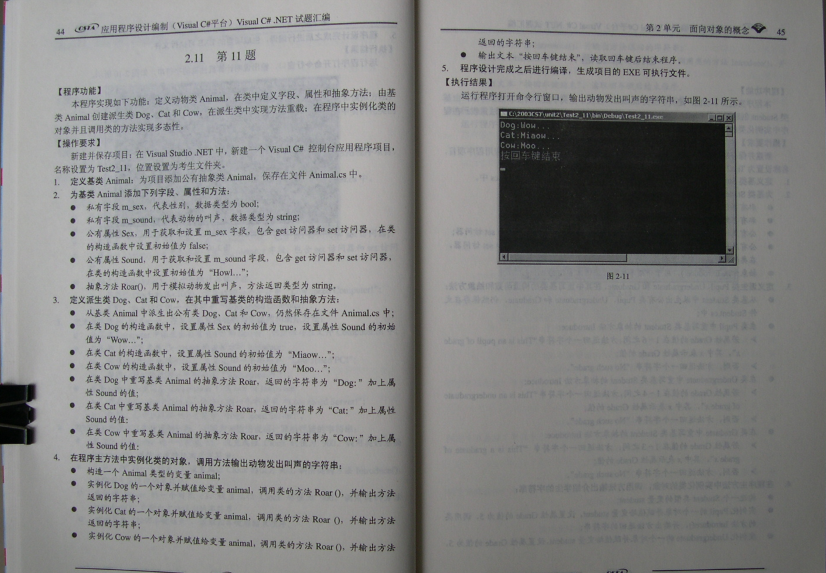
new与override的区别:
在子类中用 new 关键字修饰 定义的与父类中同名的方法,叫覆盖。 覆盖不会改变父类方法的功能。
用关键字 virtual 修饰的方法,叫虚方法。可以在子类中用override 声明同名的方法,这叫“重写”。相应的没有用virtual修饰的方法,我们叫它实方法。
重写会改变父类方法的功能。
当用子类创建父类的时候,如 C1 c3 = new C2(),重写会改变父类的功能,即调用子类的功能;而覆盖不会,仍然调用父类功能。
Animal.cs:
using System; using System.Collections.Generic; using System.Linq; using System.Text; using System.Threading.Tasks; namespace Test { class Animal //创建基类 { private bool m_sex; private string m_sound; public bool Sex { get { return m_sex; } set { m_sex = value; } } public string Sound { get { return m_sound; } set { m_sound = value; } } public Animal() { Sound = "Howl..."; } public virtual string Roar() { return ""; } } class Dog:Animal //创建派生类并继承Animal { public Dog() { Sex = true; Sound = "Wow..."; } public override string Roar() //重写Roar函数 { return "Dog:" + Sound; } } class Cat : Animal //创建派生类并继承Animal { public Cat() { Sound = "Miaow..."; } public override string Roar() //重载Roar函数 { return "Cat:" + Sound; } } class Cow : Animal //创建派生类并继承Animal { public Cow() { Sound = "Moo..."; } public override string Roar() //重载Roar函数 { return "Cow:" + Sound; } } }
Program.cs:
using System; using System.Collections.Generic; using System.Linq; using System.Text; using System.Threading.Tasks; namespace Test { class Program { static void Main(string[] args) { Animal animal = new Animal(); //分别创建父类及子类对象并将子类对象赋给父类对象,由于使用“重写”父类对象将调用子类Roar函数 Dog dog = new Dog(); animal = dog; Console.WriteLine(animal.Roar()); Cat cat = new Cat(); animal = cat; Console.WriteLine(animal.Roar()); Cow cow = new Cow(); animal = cow; Console.WriteLine(animal.Roar()); Console.WriteLine("按回车键结束"); Console.ReadLine(); } } }